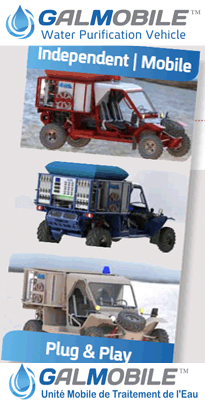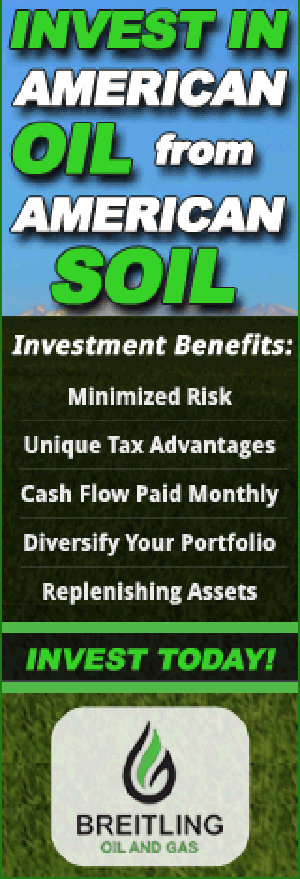Iran: Iran Mercantile Exchange IME eases investment in Iranian commodities
2016/03/16
p.jpeg)
Connecting the Iranian economy to world financial markets has presently been made possible with the lifting of sanctions before this year. Dr Hamed Soltaninejad, CEO of Iran Mercantile Exchange, the country’s Tehran-based commodities exchange, looks at the best ways for foreign investors to enter Iran’s financial market.
Iran’s sanctions lift on Implementation Day is day of victory, power and diplomacy. A new chapter has begun in international relations for Iran and a broader world. How do you see this new era impacting Iranian economy and society?
I think there were a lot of limitations and constraints against the Iranian economy due to sanctions. This impacted our communication with the world economy. Iran lost out on the a lot of opportunities to attract fresh money and to export goods, being the major holder of proven natural resources in terms of oil and gas. So yes, the sanctions did not allow Iran to exploit economic and financial opportunities.
Accessing world markets and reconnecting to the SWIFT system will change the perspective of the whole banking industry. How significant is this for supporting economic increase, exports and industrial development?
Next the lifting of the sanctions, I think there is plenty of room for using fresh money from the world’s financial markets. And there are a lot of opportunities in Iran in both foreign direct investment and as well in foreign portfolio investment . Take the Tehran Stock Exchange, for example, that offers great opportunities for portfolio investment , as the Exchange represents multiple diversified industries. If anybody wants to buy goods to export from Iran, they will need the infrastructure given by Iran Mercantile Exchange, inclunding risk management procedures and data providing data dissemination services. This infrastructure is provided for the foreigners who are looking for Iranian products and commodities that are traded here. At the same time as foreigners want to buy something from Iran, they usually are not in direct arrangement with the supplier. They prefer to use the infrastructure, the routine procedures that are standard. IME has provided this infrastructure particularly for the export train. There are a lot of goods that foreigners are interested such as bitumen or iron ore. Iran Mercantile Exchange can be a platform for providing the services to the foreign buyers.
As far as I know, for any foreign investor who wants to enter into a market, they usually use proxies. With proxies I mean our investment banks, our private banks, even our commercial banks. So if anyone wants to enter into a market, they will need intermediaries. These are easier to use as they do KYC procedures, assure payments and other related services, hence paving way for foreigners to enter into Iranian markets, facilitating foreign investments.
Leading up to the 2008 crisis, commodity markets crashed. Looking at today’s performance of commodity markets, would you say that we can expect similar difficulties, and how is the Iranian commodity market faring in comparison to its neighbors?
In a lot of commodities, Iranian products are cheaper than in its neighboring nations, in petrochemicals, mining, industrial products, steel products… So, if they’re looking for additional investment in these industries, initial we will have to provide the facilities to sell these products to the foreigners. IME has provided the right infrastructure in terms of the physical market and financial market for all of the investors. So if we want to cover the currency exchange risks, initial we need to provide facilities to solve this problem. One of the common procedures for covering the currency exchange fluctuations is using the ‘Market Mechanism’. By ‘Market Mechanism’, I mean using a derivatives market. All financial markets have provided these facilities for the real market, providing for investors with regards to fluctuations and the currency exchange. These were provided these by a ‘Market Mechanism’.
In Iran, we do not have active rating agencies, which is why I think the Iran Mercantile Exchange is a good choice for providing the infrastructure for the Iranian market. According to the recent rules and regulations approved by parliament, the government is supposed to provide these facilities to foreign investors. And we are looking to provide the ‘Market Mechanism’ to cover the currency exchange fluctuations. Therefore it is significant to have a well functioning currency exchange derivatives market that would be a large competitive chance in comparison with our neighbors, as the prices of goods are cheaper in Iran in comparison with neighboring nations. This will give us the opportunity to export additional and additional goods and services to the other nations.
The other competitive chance that we can make use of is to use increased financial infrastructure. By financial infrastructure I mean the CDR mechanism, the Certificate of Deposit Mechanism, which we use for maize produced in one of Iran’s provinces. By using this mechanism to export, we will have the opportunity to be closer to the markets. For example, anyone who wants to buy bitumen from Iran will be able to buy it from Iran Mercantile Exchange in the near next, and IME will deliver bitumen to the buyer in any warehouse near his or her position, without dealing with intermediaries. It will be the same procedure as the LME (London Metal Exchange) that we will provide to buyers and sellers on the IME. Next depositing the goods and services in warehouses, you will have the opportunity to issue a warrant, a financial security, that you can sell on the financial markets. So, we are looking to develop these financial instruments to facilitate the investment in Iran. That’s why we do not believe that such liberalization will lead to crisis.
Iran has a dual currency exchange issue, which IME is trying to tackle. What are the major challenges that the IME is facing to actually implement its objectives and strategies to make the Iranian Rial currency exchange additional attractive?
One of the challenges is compliance. Being compliant with the rules and regulations. During the sanction, we could not connect with the foreign regulatory bodies. So, we did not have the opportunity to be compliant with the international rules and regulations. Today’s necessity is how we can gain that compliance, how we can comply with the international rules and regulations.
The other challenge is how we can cooperate with foreign banks in terms of clearing settlement and other services we are looking for. The sanctions are lifted but, as from presently on, we do not have any European bank that has entered Iran. Maybe some of them want to establish branches in Iran. But, they will need authorization by the Central Bank of Iran. Maybe we need to be additional compliant with international rules and regulations so that foreign banks can establish their branches in Iran.
We have a policy that foreign banks have the opportunity to establish their own branch in free zones in Iran, like the export zone located in Kish. So there is opportunity for foreign banks to provide clearing settlement, KYC. Maybe some of the investment banks are eager to provide delivery services as well. I think there is an opportunity for foreign banks and foreign bodies who are compliant with globally accepted rules and accepted regulations to provide services to Iranian bodies like IME. We welcome any suggestions from foreign banks to provide these services inclunding foreign investment banks, foreign role-players.
In the financial market, we have a lot of different role-players. Most of them are as speculators. Iranians are not very familiar with this. Some industrial activists are not familiar with the financial market. They don’t know how they can cover themselves against the risks, by hedging themselves. Maybe we need some international role-players to establish the financial market.
We have had been working very hard in terms of establishing the financial markets in IME. The majority successful part of the financial market was the Gold Coin Derivatives Market. Gold coin is a popular type of investment in Iran. Most of the Iranians follow the prices of the Gold Coin. This market has a lot of role-players. So we decided to establish the financial market based on this underlying investment , which was somehow successful. We have tried some other underlying assets in terms of agricultural products, some industrial products, but we weren’t successful because we didn’t have enough role-players in those markets. This shows that one of the opportunities is to provide the room for the foreign role-players to establish and to assault the financial market covering underlying assets that are very significant for Iranians to cover the price fluctuations.
The IME is by presently cooperating with the Swiss Futures and Options Association, the FIA, and the Interexchange Electronic Union, and is celebrating its 10th anniversary next year. What does the IME want to accomplish in the next 10 years, and why are you the right man for the job?
In terms of cooperation with institutions, organizations and other exchanges, I think the majority appreciated field of cooperation is in terms of sharing knowledge. In commodity exchanges, there are a lot of, many solutions to provide facilities for the market role-players. In some nations, they have done their own and they have invented their own procedures for addressing difficulties to facilitate the financial market and connect it to the real economy. So, there are a lot of experiences we can learn from different nations in terms of the commodity exchanges. Most of the securities exchanges are similar to each other. But in terms of commodity exchanges, this policy is not authentic. CME, as one of the major commodity exchanges, has its own rules and regulations, its own procedures, its own accepted commodities, its own registered investors.
So I think we can share knowledge initial, and again at a second level, we can cooperate in order to dual inventory financial instruments. Commodity exchanges have done dual listing in terms of financial instruments. So, I think it’s an opportunity for Iran Mercantile Exchange to cooperate with foreign commodity exchanges in terms of dual listing, in terms of sharing the role-players. For example, if I’m compliant with the minimum rules and regulations accepted in a foreign country, I can provide the facility for that foreign country by listing my securities, my investment -backed securities on their exchange and the other way around.
There are a lot of financial role-players in nations. Mexico has done similar procedures. Some of the market role-players in Mexico were supposed to take some positions in the CME that is based in US. So, it was a type of cooperation in terms of connecting the real economy of a country with the financial market of an economy that is additional developed. This is an obvious opportunity in terms of connecting the Iranian economy to the world financial markets and in the near next, the IME will provide that window to enter additional progressed financial markets.
The reason why I was appointed at IME on the exact day of the JCPOA signing was a coincidence.
You before held the position of President and CEO of the CSDI, and worked as a director for the Kerman and Karaj regional exchanges. What experiences do you bring to the table that will make you stand out as CEO of the IME?
My plan for the IME is to provide or to follow the same procedure of other mercantile exchanges in the world. Initial, try to improve their spot market. By a spot market, I mean a market where all of the commodities are traded, and as an exchange you just provide the supply and request procedure for price discovery. And delivery is done under the supervision of Mercantile Exchange. You provide risk management services, by clearing our settlements on the basis of a Delivery Versus Payment (DVP) model. So next establishing a well functioning spot market, the next level is a financial market based on some simple financial instruments, like forwards. So, presently we need to make a financial market based on a Forward Arrangement or Certificate of Depository Receipt that is simple to navigate.
And again we can move on to inclunding some progressed financial markets like the futures market, options market and others. Presently we are at the stage of providing this second level of financial market instruments. As I mentioned before, we have the Gold Coin Next’s market, which is a good example. We have active role-players in the Gold Coin market, but a lack of role-players in other markets. Initial, we have to make the market role-players familiar with financial market, with securities. They are not familiar with securities. They have to learn about securitization. What’s your benefit if you do securitization based on the assets? It is a step-by-step approach; we have to make them familiar with the financial market and again move to the next generation of financial market based on derivatives. I think the second progressed derivatives market that we can provide for the market role-players is currency exchange derivatives. There are a lot of, many role-players in traditional markets. So, if we provide the platform of clearing our settlements based on a DVP procedure for them, they will come to our market.
Attracting foreign investors is an significant factor for Iran to reach its 8% increase target. It is said that Iran needs between $30-$90 billion of foreign investments a year to be able to actually reach that target. What would you tell investors who are interested in Iran, in IME and its opportunities?
I would tell them to take the opportunity of investing in Iran. We have to provide the facilities for foreign investors. As far as I know, we have not considered participation of foreign financial market role-players in Iran’s economy. We can just sell Iranian goods and services that we produce as a country, but that is not investment . If the financial players of the world economy enter Iran, again we can judge that something is going to happen in the financial market.
Furthermore, the best gateway for entering Iran’s financial market is through its banking system and capital markets. If I were in a foreign investor’s shoes, I would try to establish some institutions like investment banks in Iran. Or I would buy 50% of a brokerage home or a financial institution in Iran and start doing business. Because if they want to start doing business due from their own country, it may get difficult because of the unfamiliarity with the rules and regulations, with customs, with everything really. So if they want to participate in the economy of Iran, and if we Iranians want to attract the fresh money from the foreign economy and foreign financial markets, we need to pave the way for the financial institutions to enter into Iranian economy.
- Related Articles
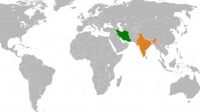
Iran and India could therefore resume their gas trade by reviving the Oman-India sub-sea pipeline
2015/11/16 As the P5+1 prepares to roll back the nuclear-related sanctions on Iran in accordance with the July 2015 accord, the question that springs to mind is whether this will bring about a revival of energy ties with India. Additional pertinently, once sanctions are rolled back, which way will Iran go? Will Tehran prefer to focus on the additional lucrative European energy market, particularly market for natural gas, or will it focus on Asia?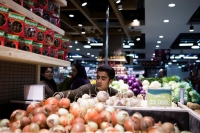
Lavish Malls Sprouting Up To Attract Iranian Elite
2015/01/21 TEHRAN, Iran — The low rumble of powerful engines reverberated against the high-rises of Zaferanieh, an upmarket neighborhood, as Porsches and Mercedes lined up to enter the multistory parking lot of a fancy new shopping mall, the Palladium, the new addition to Tehran’s shopping scene.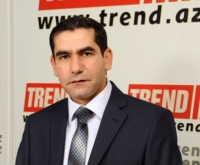
Dalga Khatinoglu Head of Persian News Service of Trend Agency
2014/10/17 Iran's GDP (gross domestic product) growth increased by 4.6 percent during the spring of 2014 for first time since 2012, according to the Central Bank of Iran. The figure raised serious doubts among experts and Iranian government had to justify and defend the announced figure several times with various facts and statistics, like comparing the oil export level during spring with the same period in the previous years. There is no accurate statistics about Iran's oil export during this period, but the Central Bank of Iran (CBI) says that the growth of oil sector was 6.1 percent at the time.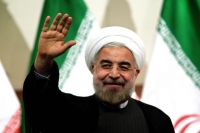
Hassan Rowhani is Iran’s president-elect
2013/07/21 Iran’s president-elect Hassan Rowhani has a some-what unknown Scottish completed, being educated in Glasgow during the 1990s. Rowhani, 64, studied at Glasgow Caledonian University in 1995, pursuing an MPhil and later a PhD in law, from which he graduated in 1999, according to Glasgow’s The Herald newspaper.
- Iran News
-
- IRAN: Iran eyes Brazil deal for taxis, trucks, 50 Embraer jets
- IRAN: France asks EU partners for new sanctions on Iran
- IRAN: Oman, stuck between Saudi Arabia and Iran
- IRAN: Iran speaker says US counterparts attempt to kill nuclear deal
- IRAN: Turkey should mediate between Iran, Saudi Arabia
- IRAN: Iran-Saudi tensions affect OPEC unity
- Trending Articles
-
- INDIA: Indian central bank chief to step down in surprise move
- GABON: Gabon moves to solve housing deficit
- GHANA: Ghana steps up to secure electricity supply
- UKRAINE: Public debt for housing and utilities services in February up by 1% to Hr 13.5 billion
- THAILAND: Foreign investment plummets in junta ruled Thailand
- CANADA: Iconic Canadian hotels




.gif?1338940414)

